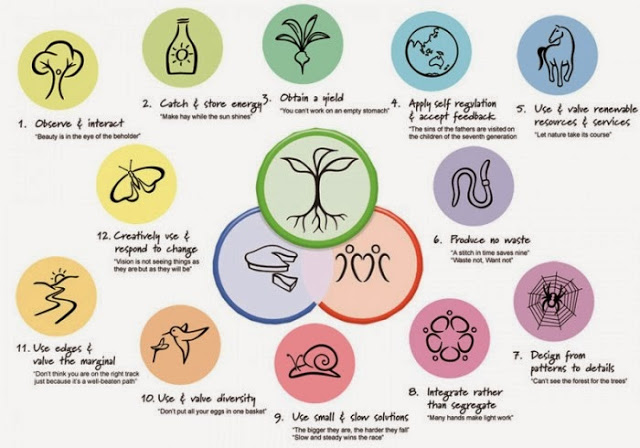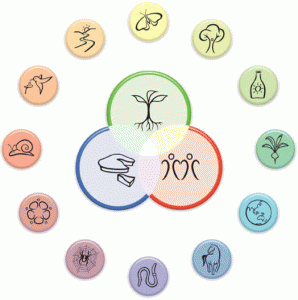What is Permaculture?
`
This is a very hard question to answer concisely. Put 10 permaculturalists in a room and you’ll come out with 20 definitions of permaculture. Here are a few.
The word permaculture was coined in the mid-1970′s by David Holmgren, a systems ecologist and Bill Mollisonand, a researcher, author, teacher and naturalist, as a combination of the words “permanent” and “agriculture”. This signified their work to establish principles of land use and human organization in providing for human needs that were sustainable indefinitely, given the reliance of the dominant status quo on non-renewable fuels and ecologically degrading practices. The evolution of the term to encompass aspects beyond agriculture, such as energy flows and social systems, led to the adaptation of permaculture as “permanent culture”.
 David Holgmren defines permaculture in his book “Permaculture: Principles and Pathways Beyond Sustainabilty” as “consciously designed landscapes which mimic the patterns and relationships found in nature, while yielding an abundance of food, fiber and energy for provision of local needs. People, their buildings and the ways they organize themselves are central to permaculture“.
David Holgmren defines permaculture in his book “Permaculture: Principles and Pathways Beyond Sustainabilty” as “consciously designed landscapes which mimic the patterns and relationships found in nature, while yielding an abundance of food, fiber and energy for provision of local needs. People, their buildings and the ways they organize themselves are central to permaculture“.
Bill Mollison writes that “Permaculture is about designing sustainable human settlements. It is a philosophy and an approach to land use which weaves together microclimate, annual and perennial plants, animals, soil, water management, and human needs into intricately connected, productive communities”.
Author Michael Feingold writes that “Permaculture is revolution disguised as gardening“. I like that one.
Permaculture is in part a design science rooted in 3 ethical principles:
- Care for the Earth
- Care for People
- Share the Surplus
The three guiding ethical principles remind us that the Earth and it’s natural cycles provide the basis for life; that people are a contributing member to the community of life and have needs for food, water, shelter, community and sense of self that we must attend to providing; and that we are provided with times of abundance which enable us to share with others, connecting us to a community that supports us when we experience times of less.
Following from these ethics are 12 principles of permaculture design, best explained by David Holmgren. Click here for his explanation of these Permaculture Principles

